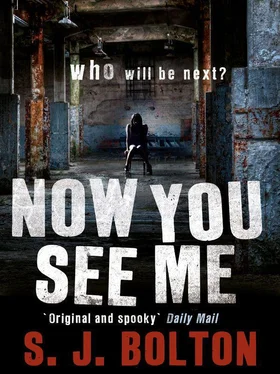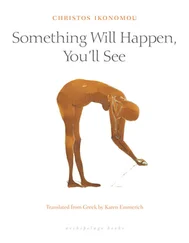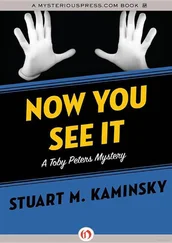Bolton, J. - Now You See Me
Здесь есть возможность читать онлайн «Bolton, J. - Now You See Me» весь текст электронной книги совершенно бесплатно (целиком полную версию без сокращений). В некоторых случаях можно слушать аудио, скачать через торрент в формате fb2 и присутствует краткое содержание. Год выпуска: 2011, Издательство: Transworld Digital, Жанр: Старинная литература, на английском языке. Описание произведения, (предисловие) а так же отзывы посетителей доступны на портале библиотеки ЛибКат.
- Название:Now You See Me
- Автор:
- Издательство:Transworld Digital
- Жанр:
- Год:2011
- ISBN:нет данных
- Рейтинг книги:4 / 5. Голосов: 1
-
Избранное:Добавить в избранное
- Отзывы:
-
Ваша оценка:
- 80
- 1
- 2
- 3
- 4
- 5
Now You See Me: краткое содержание, описание и аннотация
Предлагаем к чтению аннотацию, описание, краткое содержание или предисловие (зависит от того, что написал сам автор книги «Now You See Me»). Если вы не нашли необходимую информацию о книге — напишите в комментариях, мы постараемся отыскать её.
Now You See Me — читать онлайн бесплатно полную книгу (весь текст) целиком
Ниже представлен текст книги, разбитый по страницам. Система сохранения места последней прочитанной страницы, позволяет с удобством читать онлайн бесплатно книгу «Now You See Me», без необходимости каждый раз заново искать на чём Вы остановились. Поставьте закладку, и сможете в любой момент перейти на страницу, на которой закончили чтение.
Интервал:
Закладка:
What the hell was I supposed to do now? Knock?
There were two other entrances to the Engine Vaults that anyone who knew about the catacombs would be aware of. I left the towpath and climbed back up the steps to railway level. At the top I stopped dead. I’d seen someone, something, dart out of sight not twenty yards away. I stepped into the shadows and waited.
After five minutes nothing had happened, so I took a pedestrian path that brought me past a development of terraced waterside houses. I walked the path’s full length until I reached the huge wooden gates that prevent casual access to one of the more extensive tunnels, known as the western horse tunnel. The adjoining railing gave me just enough height to leap over the gates.
The door to the tunnel was padlocked shut, and breaking this padlock didn’t help either. The door held as firm as the metal gate had done. Time to check out entrance number three.
This time I took the main road through a housing estate called Gilbey’s Yard and then climbed the boundary wall between the estate and the railway. Graffiti all along the other side of the wall suggested I wasn’t the only one to make this journey in the last ten years. It wasn’t easy underfoot but there was enough light, mainly from Morrisons supermarket not too far away, for me to see where I was going. The third ‘official’ way in was a narrow spiral staircase in the north-eastern corner of the vaults. Whether I actually went down it was another matter; for now, I was simply going to look.
Ahead of me was the fencing that surrounded the staircase. As I drew closer, I could see that two upright struts had been broken, creating a gap that someone of my size could easily squeeze through. So I did.
On the other side, the staircase was open to the air, just as I remembered it. This was the way I was supposed to come in. Llewellyn had blocked the other two entrances so that I had no choice. This was where she was waiting.
What she didn’t know, though, what I was willing to bet very few people knew, because I’d only stumbled across it myself by accident, was that there was a fourth way into the vaults. I’d told no one about it, not out of any desire for secrecy, I just didn’t think anyone would be interested. I was willing to bet, though, the way in was still there. If I could bring myself to take it.
Over the boundary wall again – easier said than done, but I was running on pure adrenalin by this stage – I jogged back towards the towpath, thinking back ten years, to when once I’d tried to leave the Engine Vaults without a torch. I’d taken a wrong turning and found myself in a section of tunnel that instead of leading to the canal, as I’d expected, took me parallel to it. After a hundred metres or so it came to a dead end.
Curious, I’d gone back the next day with a torch and found that part of the wall that blocked off the tunnel had collapsed and that it was possible to climb through into another large underground chamber that had once been the basement of a large goods shed. The shed itself had long since been demolished. Housing and even part of Morrisons had been built in its place, but the vaulted brick basement remained.
Amazed at my own daring, I’d gone through it, into another section of tunnel and then a second basement, this time beneath another Victorian building called the Interchange Warehouse. I’d heard the sounds of traffic and of water, and without warning had stepped through an archway and into dim daylight. I was still in a tunnel, but one that contained a short offshoot of Regent’s Canal.
I could see the Interchange Warehouse ahead of me now, a four-storey red-brick building with lots of arched, cast-iron windows. The offshoot I’d found that day was a man-made backwater that had originally functioned as a private dock, allowing boats to unload cargo into the warehouse. Today, it’s still used by narrowboats needing to turn round. It even has a name, after an unofficial debris-collection function it serves. It’s called Dead Dog Hole.
In theory, if I took that same route now, in reverse, I could make my way through the catacombs and enter the Engine Vaults from a direction Llewellyn wouldn’t be expecting.
To do so, I’d have to jump into Regent’s Canal.
By this time, I’d reached the towpath and was at the foot of the small bridge that takes pedestrians over Dead Dog Hole. A boat had been moored against the bank. Without stopping to think, I climbed down on to it and made my way along the narrow ledge that rimmed its port side. When I reached the bow, I took another look around, partly to check that no one could see me; mainly, I think, to put off a bit longer what I had to do. I was alone, rain was falling steadily and the black water seemed to shimmer beneath me. I could smell diesel fuel and rotting vegetation.
Canals aren’t rivers. They have no tide and no flow. The Regent’s Canal isn’t much more than a metre deep. In theory, I could stand upright. I would be able to wade. It would be for a few seconds at most, just long enough to get me under the pedestrian bridge and into the hole itself.
No point thinking about it. I took off my jacket and sweatshirt and pushed both into my rucksack. The rucksack stayed on the boat as I lowered myself into the water.
There aren’t words to describe properly that feeling of being squeezed on all sides by a force powerful enough to crush, or a cold that seemed to freeze my lungs and stop them functioning. The water came up to my neck. The one-metre depth had been a gross underestimate. Holding my rucksack high with one hand, gripping the bank with the other, I began wading.
Every step seemed to take an age, as I groped around the canal bed that was alternately hard as granite and soft as putty. The bed was littered with objects, some of them so big I had to make my way round them, hating each second I wasn’t in contact with the bank.
Light diminished under the arch of the tunnel, but after a second or two my eyes started to adjust. A few more seconds and I could make out stone steps just ahead of me. I bumped up against them and managed to throw my rucksack on to the bank and grab hold. Then I hauled myself out.
For a minute I couldn’t do anything but shudder. Then I pulled off my soaking T-shirt and got my sweatshirt and jacket from my bag. That helped a bit. As did taking off my shoes and emptying them of filthy canal water. When I felt I could face it, I stepped through the arched doorway and towards the far wall. Then I began to make my way through a series of small arches, each only six feet high and around twelve feet wide.
The vaults smelled of stagnant water, sewage and something sharp and acrid, almost chemical. The air was still, and the further I went in, the more the sound became unnaturally distorted. The steady dripping of water, the rustling of rodents among rubbish. How rubbish got in here I had no idea, but it had. I passed supermarket carrier bags, the remains of take-away dinners, a dead cat, clothing, even a camp stool. With every step I took, noise from the street was fading away until there was nothing but my own footsteps, softly squelching across the cobbled ground.
Every few paces took me past wide archway footings, behind any one of which someone could be waiting. I shone my torch ahead of me, keeping as quiet as I could, watching out for shadows that weren’t mine, for sounds that hadn’t originated with me.
After a few minutes, the north-western wall loomed ahead and I could make out the black space that was the entrance to the horse tunnel. If my memory served, I had to follow it for a short distance before it met the basement of the old goods shed.
The tunnel was easier to travel through than the huge underground chamber. For one thing, the way wasn’t in doubt. For another, there was some light, coming in through ventilation grilles in the ceiling. Before more than a few seconds had gone by, I was in the basement under the old goods shed.
Читать дальшеИнтервал:
Закладка:
Похожие книги на «Now You See Me»
Представляем Вашему вниманию похожие книги на «Now You See Me» списком для выбора. Мы отобрали схожую по названию и смыслу литературу в надежде предоставить читателям больше вариантов отыскать новые, интересные, ещё непрочитанные произведения.
Обсуждение, отзывы о книге «Now You See Me» и просто собственные мнения читателей. Оставьте ваши комментарии, напишите, что Вы думаете о произведении, его смысле или главных героях. Укажите что конкретно понравилось, а что нет, и почему Вы так считаете.












